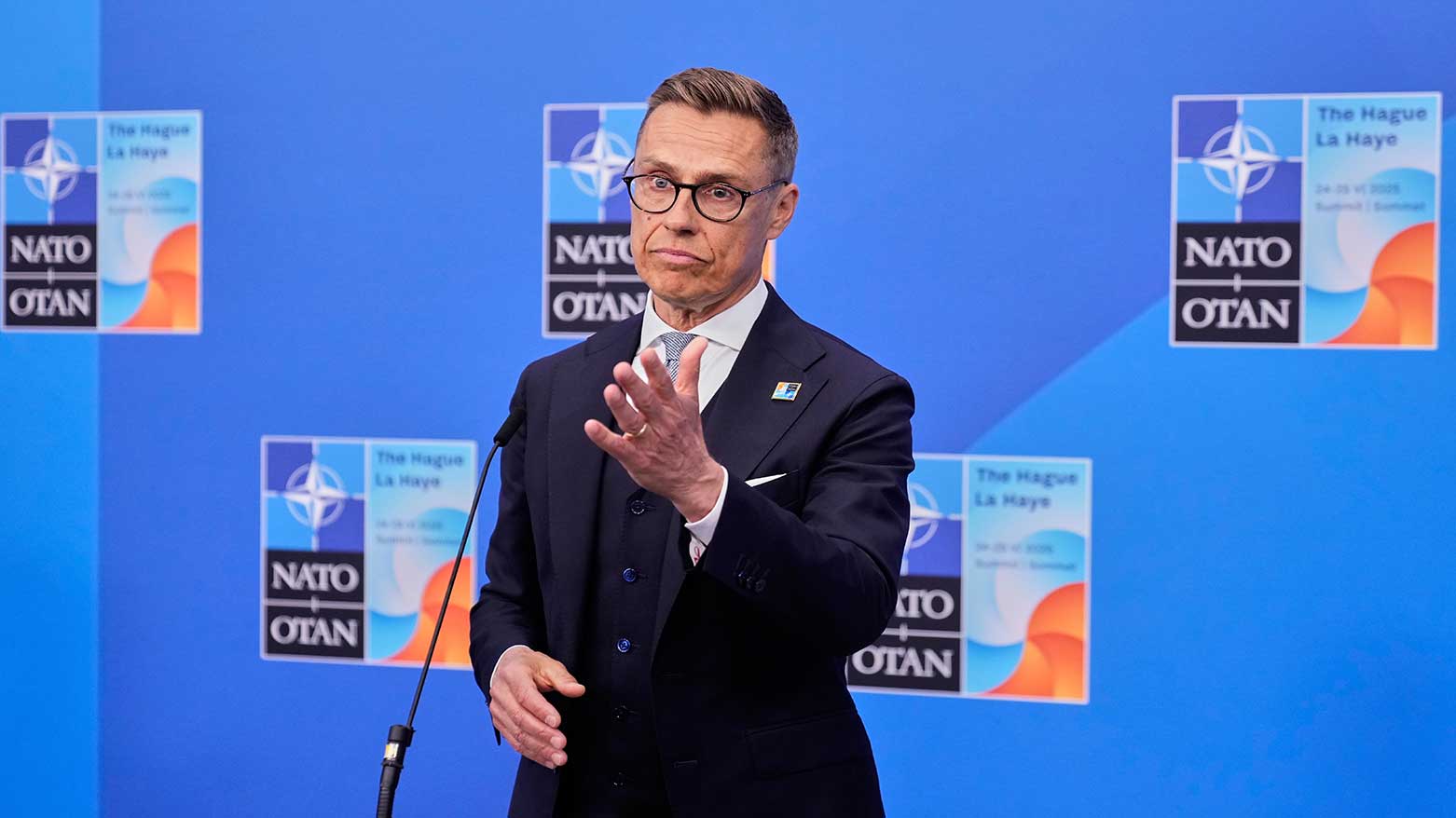Finnish President Warns of Rising Nuclear Tensions as Drones Spy Over NATO’s Nuclear Deterrence Site in Belgium
As Washington and Moscow revive nuclear brinkmanship, European leaders warn of mounting security risks — from resurgent atomic testing to suspected Russian drone espionage over NATO’s nuclear sites.

ERBIL (Kurdistan24) — Finnish President Alexander Stubb on Monday warned that the world had entered “a new era of nuclear weapons,” following the United States’ announcement that it plans to resume nuclear testing for the first time in over three decades.
Speaking at a defense policy event in Helsinki, Stubb said the “logic of deterrence” and the foundations of “strategic stability between the superpowers” were shifting rapidly, describing the growing reliance on nuclear capabilities as a worrying trend in global security.
“We have entered a new era of nuclear weapons, in which, unfortunately, the significance of nuclear weapons has been increasing,” Stubb said.
The remarks came days after U.S. President Donald Trump declared that Washington would resume nuclear weapons testing — a move that sparked global speculation over whether it would involve the first U.S. nuclear explosion since 1992.
The announcement followed Russia’s claim that it had successfully tested both a nuclear-powered cruise missile, the Burevestnik, and a nuclear-capable underwater drone, escalating the arms race between major powers.
No country except North Korea has conducted an actual nuclear detonation in recent decades, with Russia and China having ceased such testing since 1990 and 1996, respectively.
On Sunday, President Trump alleged that Russia and China have conducted covert underground nuclear tests, asserting that the United States “would follow suit.”
For Finland, which shares a 1,340-kilometer (830-mile) border with Russia, these developments pose an acute security concern. The Nordic nation ended decades of military non-alignment by joining NATO in 2023 following Russia’s invasion of Ukraine.
“How can we build deterrence together? How can we control escalation?” Stubb asked, emphasizing the need for close coordination with Western allies amid the shifting strategic balance.
Drone Intrusions Heighten NATO’s Alarm
While nuclear rhetoric intensifies, Europe’s skies have also become a new front of tension. Belgian Defense Minister Theo Francken revealed on Sunday that several large drones were spotted above the Kleine-Brogel Air Base, home to the country’s F-16 fighter fleet and a key site in NATO’s nuclear deterrence network.
“They come to spy, to see where the F-16s are, where the munitions are, and other highly strategic things,” Francken told CNN affiliate RTBF, confirming that the drones were engaged in surveillance activity.
The minister said a drone jammer was deployed but failed to neutralize the aircraft, while police helicopters gave chase before losing contact after several kilometers.
Kleine-Brogel, located in the municipality of Peer, hosts Belgium’s largest defense unit and plays a “fundamental role” in NATO’s nuclear posture. The base’s fleet of F-16s is scheduled to be replaced by advanced F-35 fighter jets “within a few years,” according to its official website.

The incident follows a series of drone incursions across Europe. Earlier in the week, Lithuania closed its border with Belarus, citing “constant violations” of its airspace, while Belgium had also reported drone sightings above its Elsenborn military base near the German border in October.
Francken said on X that the weekend’s drones were “larger type” aircraft flying at “higher altitudes,” suggesting they were equipped for extended reconnaissance missions.
Although the Belgian minister stopped short of directly blaming Russia, he warned that such activity was part of “a pattern” seen across European airspace, hinting at Moscow’s growing intelligence operations targeting NATO facilities.
The convergence of renewed nuclear ambitions and aerial surveillance has reignited debate over Europe’s vulnerability amid shifting U.S., Russian, and Chinese nuclear postures.
For smaller NATO members such as Finland and Belgium, these developments underscore a new phase of deterrence defined by hybrid threats — blending military signaling, espionage, and technological escalation.
As President Stubb noted, the question for Europe now is not merely how to deter, but how to prevent a return to the most perilous dynamics of the Cold War.
“We must learn to build stability again,” he said. “But this time, the tools are more dangerous — and the margin for error is smaller.”
